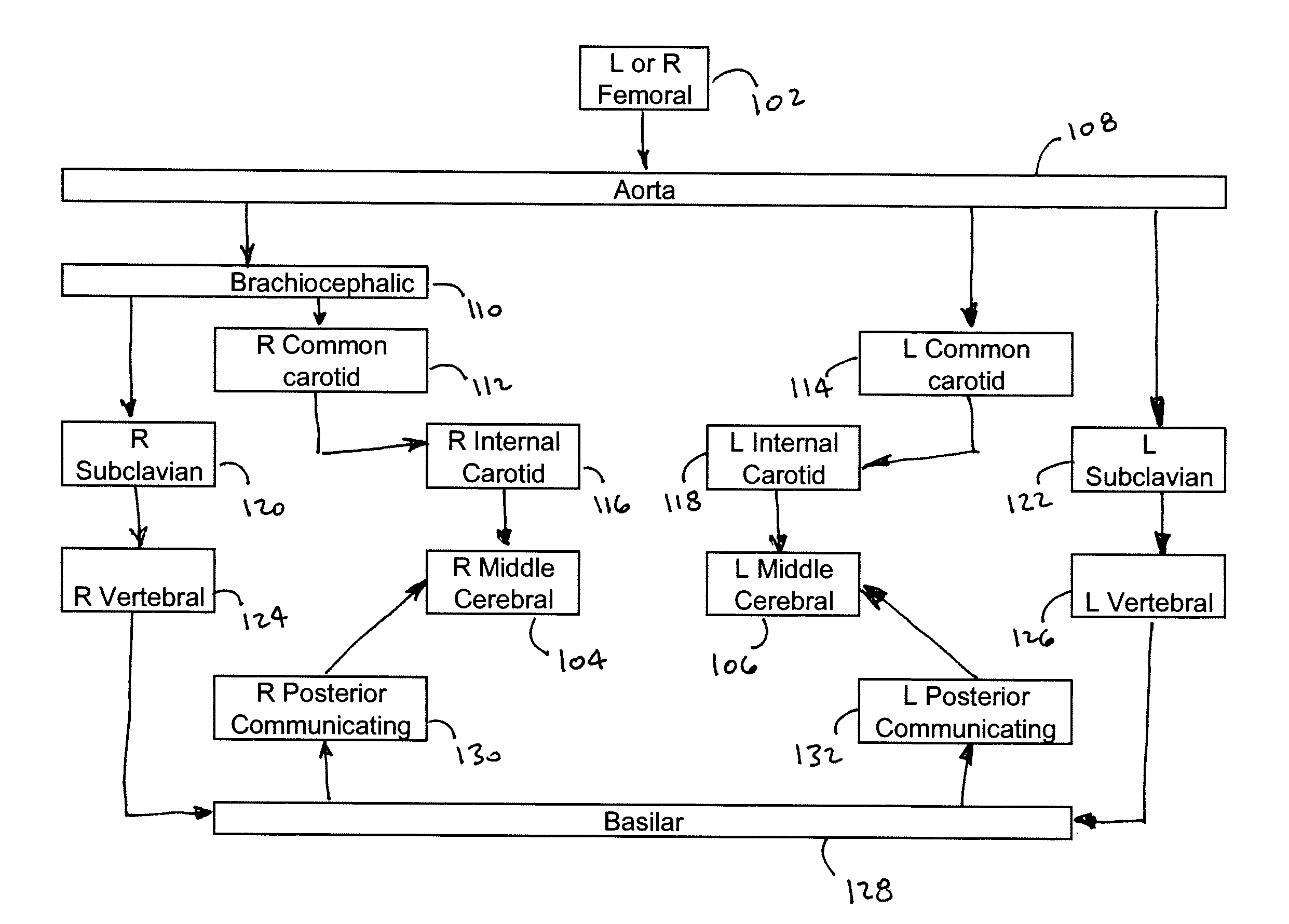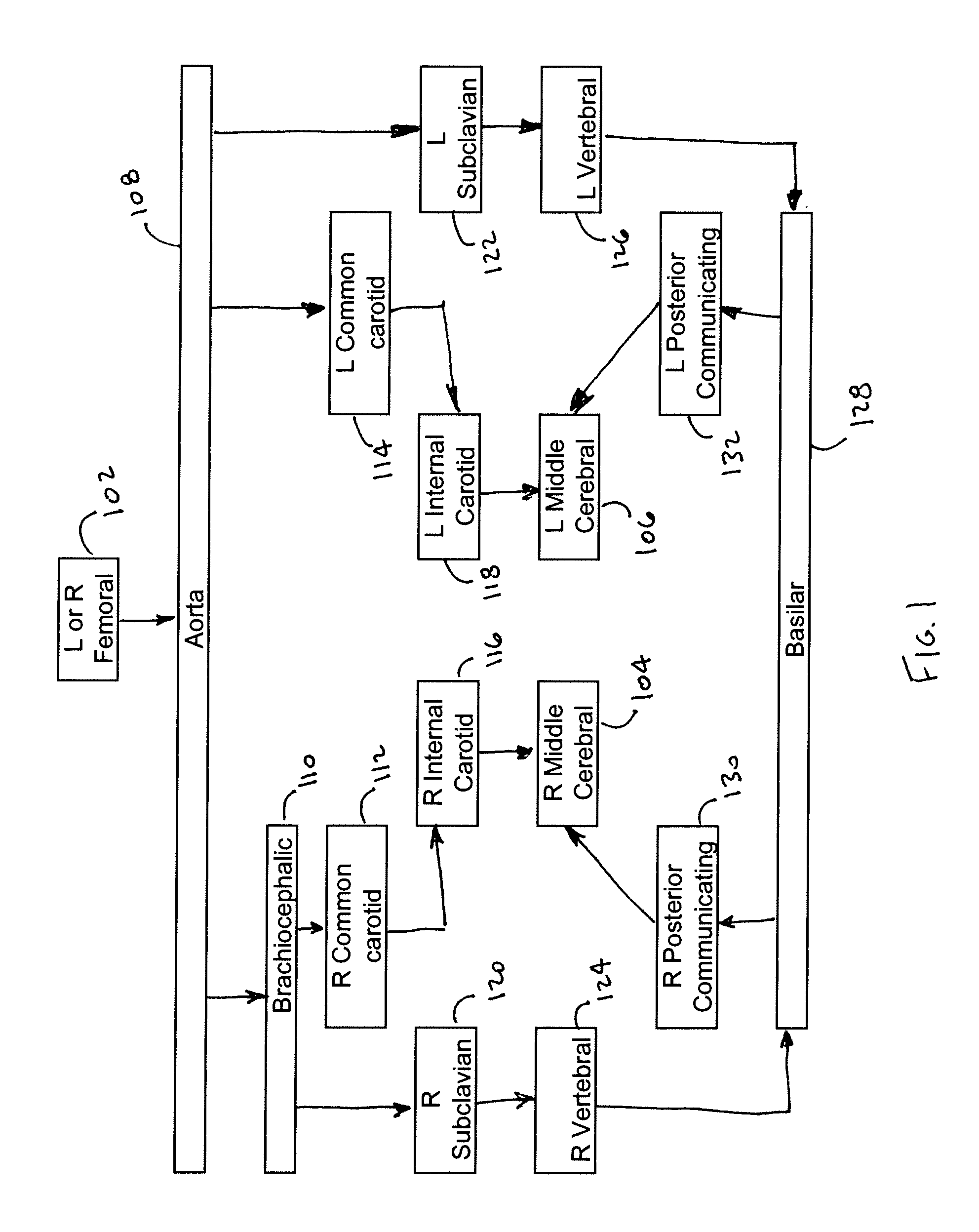Method for testing an agent for strokes in humans with a non-human stroke model
a stroke model and human stroke technology, applied in the field of human stroke model testing of an agent for stroke, can solve the problems of large failure rate of clinical trials to test the efficacy of such modalities
- Summary
- Abstract
- Description
- Claims
- Application Information
AI Technical Summary
Benefits of technology
Problems solved by technology
Method used
Image
Examples
example 1
Materials and Methods
[0022]Endovascular Canine MCA Occlusion. All experimentation was approved by the Institutional Laboratory Animal Care and Use Committee of The Ohio State University. One day prior to percutaneous intervention, mongrel canines (n=4) with a body weight of 20-30 kg received a 300 mg loading dose of clopidogrel. On the day of surgery, the animals were sedated with telazol (6 mg / kg bw intramuscular, volume<3 cc) and anesthetized (1.5-2.0% isoflurane). Continuous cardiac rhythm, respiration rate, end-tidal CO2, and oxygen saturation were monitored for control of physiologic parameters. Canine body temperature was maintained around the normal range of 38-39.2° C. using a convective warming system (Gaymar Thermacare, Orchard Park, N.Y.). Access to the bilateral common femoral artery was obtained using 5 French sheaths (Arrow, Erding, Germany). Under fluoroscopic guidance (GE Medical OEC 9800 Plus Cardiac, GE Healthsystems, Piscataway, N.J.), a five French guide catheter...
example 2
Results
[0027]The intuitive endovascular access to the MCA is by way of the internal carotid artery (ICA). As a result, there is a deficiency of published MCA occlusion models that purposefully explore alternative routes, as noted in reference [11]. In the canine animal, the ICA to MCA approach was determined to be not feasible, due to tortuosity of the canine ICA. However, the basilar artery (BA) to MCA approach was determined to be effective to provide the required endovascular access. When navigation of the canine ICA was attempted with an array of small diameter microwire (0.010″-0.014″) and microcatheter systems, the probes were not capable of advancing beyond the cavernous portion of the ICA using standard microcatheter techniques. However, and as seen in FIG. 1, endovascular approach through the basilar artery was possible. The basilar artery is adequately large and straight to accommodate the FASdasher 14 microwire and SL-10 microcatheter. Insertion of the catheter into the f...
PUM
 Login to View More
Login to View More Abstract
Description
Claims
Application Information
 Login to View More
Login to View More - R&D
- Intellectual Property
- Life Sciences
- Materials
- Tech Scout
- Unparalleled Data Quality
- Higher Quality Content
- 60% Fewer Hallucinations
Browse by: Latest US Patents, China's latest patents, Technical Efficacy Thesaurus, Application Domain, Technology Topic, Popular Technical Reports.
© 2025 PatSnap. All rights reserved.Legal|Privacy policy|Modern Slavery Act Transparency Statement|Sitemap|About US| Contact US: help@patsnap.com



